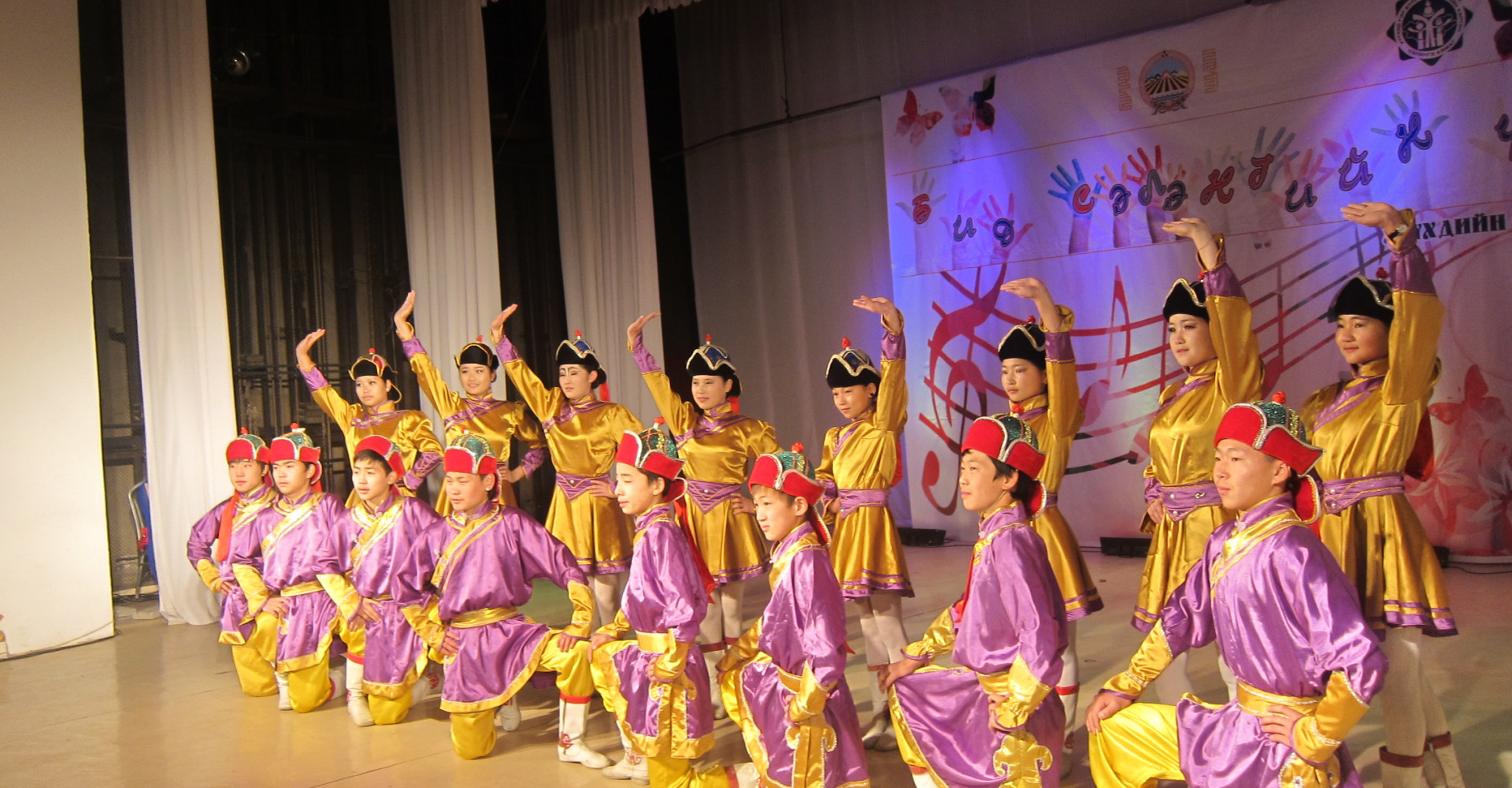There are two types of folk dance – western and eastern.
Western Mongolian folk dance includes various versions of ethnic groups, such as Uzemchin, Torguud, Urianhai, Zahchin, Kazakh, Uold, and Durvod. This type is mostly expressed by the movement of head, shoulder, and chest and sprinkling hands.
Eastern Mongolian folk dance includes diverse versions of ethnic groups, such as Buryat, Darkhad, Barga, Khalh, and Monchoogoo. The main feature of it is popular movements of foots and hands. Yokhor and Eeremshih are the example of it.
It is impossible to separate the main features of people of the ethnic from its folk dance. The swing movements expressing grand behavior take the place behind the Central Khalh’s folk dance while Western Mongolians such as Zahchin, Torguud, Uriankhai, Durvod, Khoton, Bayad, and Uuld are more dominated by sudden movements of chest, shoulder sprinkling, and beat.
The fact that Mongolians have danced folk in mass praying was noted in Mongolian Secret History. The principle movements of Khalh dance are trample, degeh, degeetseh, jump, plunge, arch, bounce, and so on. In addition to turn, there are several different types of it, such as prize, hobble, hook and fold up turn. There are various movements of hands - streaming, waving and flapping - while the main structure based on beat, sprinkling, sweating, waving, and so on. The principle of differing the “bii” from others is that shoulders move hands, chest move shoulders and hands, and legs support whole body chronologically.
Durvods are calling the folk dance “biileh” instead of “bii”. The special instruments are dedicated just for this dance. What special about the “Durvod bii” is that dancers move in very small stage. They perform one by one in the concert. Not distinguishing whether the males or females. Durvods are doing “bii” with all the neighbors and relatives in whole year except winter.

Mongolian folk dance
Anything we can improve?
Let us know
Please let us know everything you have. Your comment will help us a lot to improve this content.



